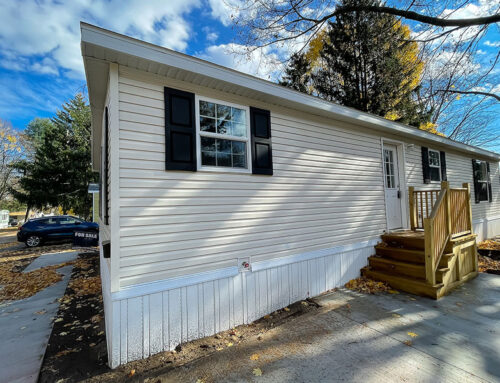For decades after World War II, South Bronx was home to high poverty and crime rates that were fueled by a weakened local economy and few job opportunities. Vacancy rates shot up and property values plummeted. Its image started to shift sometime in the late 1970’s, however, with the birth of hip-hop and the emergence of graffiti as an art form. And a few decades after that, the face of many neighborhoods shifted again as entrepreneurs, small businesses, and even the fashion industry began investing in the South Bronx with the hopes of bigger, and possibly more profitable, changes coming down the pipe. With the announcement from the governor’s office last year that South Bronx will receive millions in funding as a part of its Downtown Revitalization Initiative, it looks like those changes may be finally just around the corner.
And, as a local investor, I’d say the timing couldn’t be better for the South Bronx to become one of the best places in New York to invest in real estate as a result.
Why Investing in the South Bronx is a Good Bet
The Downtown Revitalization Initiative (DRI) was formed to assist in the economic transformation of communities throughout the state. Every year, the Regional Economic Development Councils (REDCs) nominate communities already on the cusp of transition to be the recipients of ten million dollars to help further local revitalization efforts. The South Bronx, recently recognized as one of the next hip areas to live and work in by The New York Times, made the list of nominees. In September, the governor’s office announced it also made the list of those communities that would receive funding.
Specific plans for the South Bronx have yet to be laid out, but the overarching goal of the DRI is to facilitate economic opportunities, safe and affordable housing, the development of community projects, and improved transportation infrastructure. And, though the actual boundaries of the South Bronx are not well-defined, the area specifically targeted for revitalization is the Bronx Civic Center, which extends from 144th to 165th Streets and St. Ann’s Avenue to the Harlem River. The first step, however, is for local officials and community stakeholders to create a plan.
In the meantime, plans to reconstruct the Bruckner-Sheridan Interchange are already well underway. The $1.8 billion-dollar project, announced by Governor Cuomo in the Spring of last year, will redesignate the interstate as a boulevard and improve the safety and accessibility for both cyclists and pedestrians. It will also create direct routes to the Bronx River, Starlight Park, and Hunts Point Produce Market–all of which residents of the South Bronx felt cut off from for years. The governor’s office also hopes the expanded boulevard will reduce traffic noise and pollution along local neighborhood roads, further improving the quality of life for those who live there.
Both the revitalization of the Bronx Civic Center and the conversion of the Bruckner-Sheridan Interchange are slated to create thousands of new jobs. In fact, the governor’s office anticipates that over 4,200 positions will need to be filled for the reconstruction of the interstate alone. The net effect of the projects together, of course, is likely to be similar to what we see happening in other up-and-coming New York City neighborhoods where the addition of new jobs plays a key role in an area’s revival: a stronger local economy fueling a thriving, safe, and attractive community.
But, even before these revitalization efforts were announced, the eyes of New York City home buyers had already started turning toward the South Bronx as they sought affordable alternatives to living in Manhattan, Queens, and even Brooklyn. In response to the increased demand, the median listing price for the South Bronx rose during the last three years from just under $400,000 to $600,000. As jobs, the number of parks and recreation centers, and accessibility to other areas of the city increase in conjunction with the decline of crime and pollution, this part of the Bronx borough is poised to become even more attractive.
These changes won’t happen overnight, however, which makes it a good time to keep an eye out for a great investment house. Unfortunately, the foreclosure rate for New York City is at its highest in eight years–at 58%–with the Bronx borough at 44%. And, these percentages reveal only the number of homes in foreclosure. There are likely many more families throughout the Bronx, including South Bronx, who are struggling to pay the mortgage. So, if you have a way to approach distressed homeowners before they’re foreclosed on, your chances of buying cheap property are potentially high as well. Then, by the time the revitalization efforts in South Bronx really get going, you’ll be ready to realize potentially higher returns as even more home buyers decide they want to move in.
So, if the time is right for investing in South Bronx real estate, how do you go about finding and buying investment properties that helps homeowners out of financially distressing situations and helps you grow your portfolio with great deals from a transitioning neighborhood? You first revive your real estate lead generation system.
How to Revitalize the South Bronx–and Your Portfolio
Personally, I’ve always done all right when buying, renovating, and selling properties within New York City’s boroughs. But, when I shifted my lead-finding strategy to one that brings motivated sellers from up-and-coming neighborhoods to me, my success as a professional real estate investor really took off. Now, I not only help homeowners who need to sell quick, I help revitalize the neighborhoods in areas like South Bronx where many of these older, distressed houses are located. It wasn’t a hard transition to make, either. All it took was becoming an independently owned and operated HomeVestors® franchisee, leveraging the nationally-recognized investor marketing tools–like the nationally-known “We Buy Ugly Houses®” marketing campaign–and a strong initiative to help my community.
If it’s time to revitalize your lead-finding strategy, contact HomeVestors® today!
Each franchise office is independently owned and operated.
Contact
"*" indicates required fields





